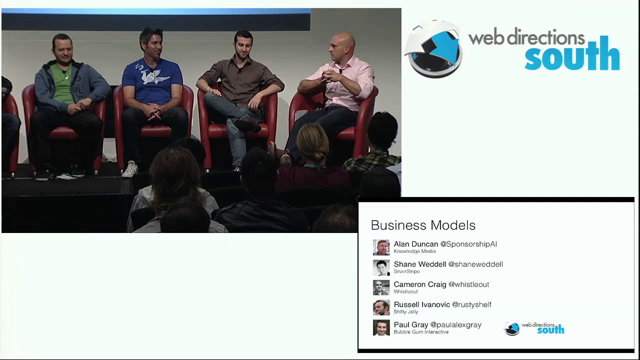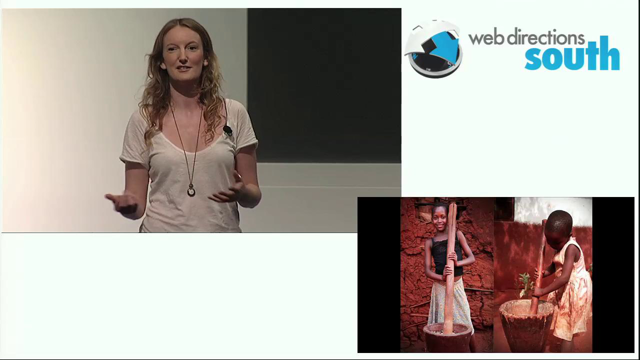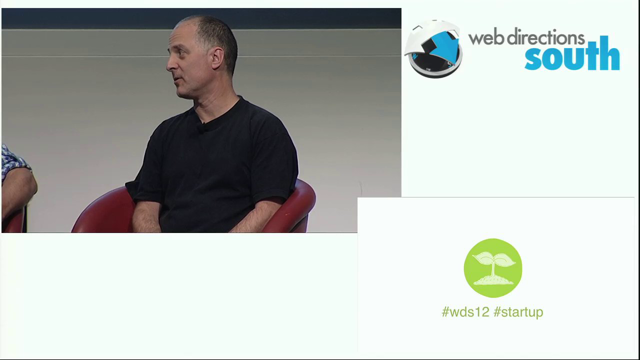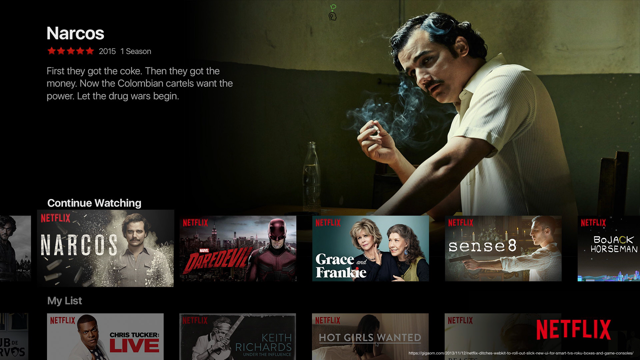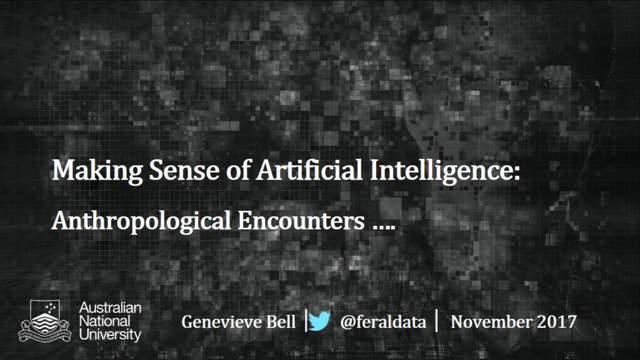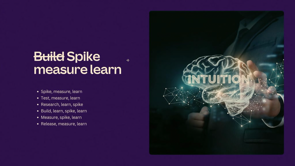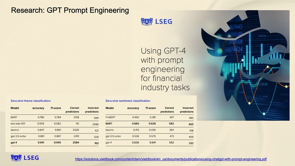The state of play for AI in business right now
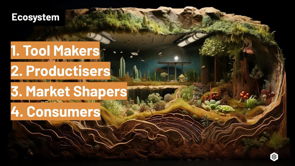
Introduction
Andrew Chatfield opens his presentation by highlighting the use of Midjourney imagery throughout his talk and sets the stage by discussing his background in technology, focusing on product management and software engineering.
Generative AI and Its Opportunities
Chatfield delves into the potential of generative AI, emphasizing its impact on consumer behavior, markets, and investment. He introduces AI Sherpa, an initiative aimed at addressing questions about the intersection of new technology and practical applications.
Story of Disruption: The Digital Transition of Newspapers
Chatfield shares a historical perspective on disruption by narrating the story of how Fairfax Digital transitioned newspaper advertising to the internet, highlighting the challenges and successes in the early days of online media.
Ecosystem of Generative AI
He sketches out the ecosystem of generative AI, categorizing participants into toolmakers, product makers, market shapers, and consumers. Chatfield explains the roles and significance of each group in the evolving landscape of AI.
Focus on Productizers
Chatfield shifts focus to productizers, discussing the challenges and strategies for those looking to integrate AI into their products. He underscores the importance of innovation in this space while cautioning against over-reliance on current technologies.
AI for Product Improvement and Cost Reduction
The talk further explores how AI can be leveraged to enhance existing products and reduce costs, particularly through automation. Chatfield stresses the significant economic impact and opportunities this can create.
Encouragement for Aspiring AI Entrepreneurs
In his concluding remarks, Chatfield encourages the audience, especially those aspiring to enter the AI space, to overcome challenges and take bold steps towards innovation, emphasizing the vast opportunities available in the market.
Thanks, John.
Anyone played with Midjourney?
Oh, everyone.
Anyone spot this is Midjourney?
Yeah, little subtle details, slight smoothness to the skin.
Yep.
Small disclaimer, all of the imagery that you'll see in this presentation is Midjourney.
And I tell people that just to flex on my mid journey skills.
Pay attention, don't just let the images wash over you.
As John mentioned, I've been around the technology game for about 25 years.
I've been building products, especially SaaS.
My lens is fairly commercial these days.
I have a background in software engineering, but the last decade or so, I've been more focused on product management.
And the way that I think about, this new space of generative AI is mostly in terms of the opportunities that it presents.
So I build up from the technology into what you can do with features in products.
And then I think about, consumer behavior and markets and investment.
And that's why I started AI Sherpa, because I think there's a lot of questions out there, about the interface between this new technology and What people can do with it usefully.
My job today, as John mentioned, is to help everyone in the room locate themselves in the sessions and presentations that happen today so that you can visualize where you are and as you acquire new knowledge try to get an idea about where it fits in the big picture.
So I'll do my best to do that for you.
But I want to start with a story about disruption, as John also mentioned, I was at Domain in the early days.
So back in the early 2000s, Fairfax, the newspaper group, started a company called Fairfax Digital to house their online versions of all of their newspaper products.
And I was on the first, management team for Domain to try to bring real estate advertising to this newfangled, internet-y thing that the kids seemed very excited about at the time.
For the young people in the room, there used to be these things called newspapers, and they were like news sites on the internet, except they were printed out.
And there were these places called newsagents where people would go, usually on weekends, particularly Saturdays, to buy one of these newspapers and take it home with them.
Just believe me.
I don't know why either.
And the old people in the room like John and I will maybe remember that Saturday's Sydney Morning Herald got so big at one point that they actually had to split it into two books.
So you'd go into the newsagent and have to pick up these two telephone Okay, I'm going to explain telephone books.
That's for another time.
And the reason, that the newspaper got so big was because it was overflowing with advertising and especially classifieds advertising.
So jobs, houses, cars, and general classifieds.
And just for real estate advertising, that brought in half a billion dollars annually to Fairfax, just for real estate.
We were plugging away and we did pretty well with domain online and we got to 40 million dollars of annual revenue in our third year.
Which is pretty good and what was probably more interesting was that we were running at greater than 50 percent profit.
And in fact, at that point, we were generating half of Fairfax Digital's profit.
And we even got to the point where we were generating more profit than the print version of domain.
Even though we had a fraction of the revenue.
So the exec team at Fairfax were very interested in this and they asked us to, come up with a plan so that they could invest more in online domain.
So we came up with a plan that would grow our business to beyond 100 million in revenue.
And a key component of that plan was that the newspaper would need to drive people online.
Now, at that time, the way that Fairfax thought about these online properties, was they were great ways to drive newspaper sales.
It seems silly now, but, and that, what was obvious to us at that time was that in a not very long, the way to find the next place to live would be purely online and there would be no role for the newspaper in that.
But that was not obvious to everyone.
We presented our plan to the Fairfax board.
Real photo, even though that guy is in the table, but, and I remember standing at the front of the room with my co presenters and it was dead silent until the CFO piped up and said, Hey, do I, understand you correctly?
Your plan is to replace 500 million of print revenue with 100 million of online revenue.
Do I have that right?
And we said, yes, but only if we win.
If we don't win, that 500 million will go to 0.
In retrospect, I think we can all agree that maybe the Fairfax management team's decision to reject our plan may have been short sighted.
But it wasn't obvious to a lot of people out there.
In fact, all the analysts, the expert media analysts at that time, were talking about how newspaper advertising was cyclical, and the downturn was temporary, and it would come back next year.
And of course that newspaper advertising never came back.
The next thing that Fairfax did was spend a billion dollars buying another newspaper group.
And then shortly after that, their share price went from over $5 to 50 cents ish.
Again, benefit of hindsight.
But that's what disruption looks like close up.
And there are hundreds or thousands of examples of that kind of transformation that was brought about by the introduction of the internet.
And just in newspaper classifieds advertising, there are billions and billions of dollars of what fancy people call value destruction in that transition.
But of course, there was also huge opportunities that were created that could never have been foreseen.
So having seen the way that the internet disruption wave played out over, arguably it's still going, but at least a decade, it really feels to me like this is happening again with generative AI.
And we're right at the start of this.
So I'm really excited to be part of it in my small way.
And I really hope that everyone here is going to be part of it too.
And I hope you feel that.
But I guess that's why you're here, right?
Because you want to be part of it.
So how can you be part of it?
Let's talk about that.
So where I thought it might be useful to start was to, sketch out a bit of an ecosystem.
So each of us can locate ourselves in this big picture.
So the first people I want to talk about are the toolmakers.
And these are the people who are building these, new technologies that kind of power this ability to change everything.
If you're a toolmaker, I suspect that you know that you are already, hopefully.
We actually have a couple of toolmakers, actually more than two, in the room with us today.
We have Kaz talking today.
He's from the University of Sydney doing research into technologies.
And we also have Paul who's going to be talking about large language models in particular.
The next group of people are the next layer up.
They're the people who take these technologies and combine them or shape them into products for other people to use.
And we have some great examples of doing that today.
We have Matthew from HelpScout, Thierry from Atomi, Ivy from Canva, and some others.
And I'm secretly hoping, maybe not so secretly hoping, that there are some people in this room who are either already in this group or really thinking about joining this group.
Maybe by adding AI to their existing products or even founding something.
The next group are off to the side a little.
And these are the people that help and guide how this whole thing will play out.
One thing that you'll see in this very early phase is that investors are driving a lot of the initial growth in this, making bets, taking risks.
Annie will be, hosting something later today about the Australian investment landscape in particular.
Also, governments and international bodies have their own way of getting involved through their own investments, but also in regulations.
And, blanking, Raymond, sorry, Raymond.
Raymond is here today and he's the expert on regulation.
Also, academia and media have a role in terms of creating awareness and also shaping our attitudes for this new wave of technology.
So we have Bec from University of Sydney.
We also have Anna and Scott from ABC and also broadcaster Mark Pesci is here.
And then I think the group that we all belong to, even if we're in some way in one of the other groups, so the consumer group, the consumers, the people who use all of these tools to effect are actually the ones who decide how this plays out really.
Because we choose what we spend our money on.
And ultimately, that will drive the change.
We also have some great examples of both, great usage of the tools, but also how to use them effectively.
So Tanya and Pouya from Crayon are here to talk about prompt engineering.
And also, Matthew Newman will be talking about how to use the tools safely, especially inside an organizational context.
So I want to get a bit of a read on who we have in the room today.
So I might get you to self identify in one of these groups.
How many people here would consider themselves a tool maker?
Very few.
And that's, I think that's a good sample, right?
These, this is a small group of people.
I hope the next group are much bigger.
So who is a product maker or maybe thinking about becoming a product maker?
Yeah.
So that's exciting to me.
That's that multiplier effect.
Of what's happened between the research that's been squirreling away for years and years maybe decades, if you want to look at it that way.
And now all of a sudden we've got all these people who are prepared to take it forward.
And then market shapers, so the people off to the side in some capacity, maybe consultants or analysts or advisors.
I put myself in this group as well.
So we have some of those.
And then I'm just going to assume everyone's a consumer, so I'm not even going to ask.
We're all consumers.
Anyone not use ChatGPT?
Come on, prepare to buy a ticket to this, but not for, not to use ChatGPT, okay.
So now that we've all located ourselves in this ecosystem, let's think about where the opportunities might be.
So we could go through each of those four groups and identify where the opportunities are.
I'm just going to pick on one of them and many of the sessions today are going to flesh out the rest.
So I want to focus on, the productizers.
So people who are product companies or thinking about starting one.
So if you're in that category, then this is going to be especially relevant to you.
But I think also for consumers, which we all are, this might help you think about the products that come to you over the coming months and years and just think about how they fit in.
Many of the founders, or would be founders, that I've spoken to over the last weeks and months in this new AI space are really looking for one of those like breakthrough ideas that generates the next unicorn.
That sort of killer app.
And maybe one of you in here is that next unicorn creator.
I really hope, there is, right?
Or maybe, more than one.
And that's fantastic.
I wouldn't want to discourage that in any way.
But I would advise caution.
Especially if that breakthrough idea depends on a particular technology that's out today or a particular technique.
Because a lot of the stuff that's happening right now is in flux, and I would say even some of it is ephemeral.
If you're reading the news, it's hard to keep up, but there's some bad ish news about GPT 4.
Ah, shaky.
I made a call a few weeks ago that maybe OpenAI wasn't the one who was going to carry the whole thing forward.
Maybe for the panel, we can talk about that.
But, so for founders in this category, I would, advise some risk reduction strategies, like fast failing.
And while I'm not discounting the possibility of becoming the next unicorn, I think that this is a path that very few people should pursue, statistically, right?
There's not going to be that many unicorns.
And to me, it's like trying to win the lottery.
Actually, winning the lottery is not something that you plan to do.
It's something that happens to you.
And in that respect, it's of limited use to study lottery winners and what they did.
So that's how I think about this kind of unicorn idea.
Now, having said that there has been a reinvigoration of the investment community around generative AI, if you haven't noticed.
So if you are planning to launch a unicorn idea into this investment climate, I would say that at least your timing is very good.
But maybe you already have a product and you're wondering if you can make an existing feature better with AI or maybe add new AI based features.
And I think there's going to be one or two or three orders of magnitude more examples of companies in this category than unicorns.
And I think that's like common sense, statistically.
The way that I think about a lot of those unicorn ideas that are coming up and also, some of the really disappointing AI features that have come out in products that have rushed into the market in the first half of this year is that for those ideas and features the headline was AI.
And actually the functionality and the utility that feature provided was almost like a secondary consideration.
So my advice for product companies thinking about adding AI is to think about their existing features and how they can be improved with AI.
So for example, you've got a search.
Can you make your search absolutely magic by injecting some new capability with AI into it?
Or, and this is maybe a little bit harder to get your head around there are so many identified needs in your segment or your market that have been pushed back because there was no good solution for it at the time.
Now that we've got these new tools, some of those old needs might actually be able to be met like effectively.
Now those kinds of identified needs that we discarded are really hard to re-remember And I think you're going to see a bunch of kind of 'dah' moments where either new startups come and take the space that incumbents had, because they just go for those identified needs that everyone knew were there, but we'd all collectively forgotten there was actually a, now there's a good solution for it.
So you'll see a lot of that in the next one to two years, I think.
I think the more successful product companies over the next one or two years will supercharge their products with AI without losing sight of their core product mission.
Now, the third category which maybe is a little bit less sexy.
I've tried to sex it up with this excellent vision.
It's actually using AI in the background to reduce costs.
Now, when most of us think about reducing costs, we think about, if you're in the corporate world, cutting travel.
Or, maybe putting slightly less expensive brand of biscuits in the tea room.
That's not what I'm talking about.
What I'm more talking about is automation, particularly of human labor.
Do not sleep on cost reduction as much as you might like to.
Product companies that can use AI to reduce either their own costs and therefore create, a whole new price level for their kind of products or can, or that can help their customers reduce their costs, particularly by reducing their headcount.
I think those companies are going to create trillions of dollars of economic activity over the coming decade.
To me, that is a absolutely, almost inconceivably large wave of disruption that will hold an enormous number of boats.
And if you want to put a boat on that rising tide, I think that's an incredibly sensible thing to do.
And you've got time.
Because like with classifieds, and the other kind of big waves of economic disruption that the internet created, these things roll out over years and decades.
And the, time scale is human imagination and human adaptability.
And that slows it down.
Don't worry that the technology might change five times between now and then.
Those needs and those behavioral changes and the business models that get developed along the way will play out over a decade or more.
So I would consider, lots of people should maybe think about getting into this space.
My final thought, if you're thinking about something in this space, like developing a product or going more into AI, it's really easy to come up with a bunch of reasons why you shouldn't.
And some of those reasons will be really good reasons.
And you might be intimidated by one of the the big American software companies that's maybe in your space.
Or maybe you're thinking about going up against one of those big American companies.
And I think the toolmakers especially, if you want to become a toolmaker, that's really hard.
And you are going up against big guys.
But I would suggest for product companies, be brave.
Trust me, I know that those big American companies are really, really busy.
They have a market, they have customers, they have lots of staff, they have just shit to do every day that keeps them busy and makes it really hard for them to take on new challenges and change their thinking.
Even if there's a very obvious AI feature that should be developed by one of those companies and everyone knows what that is, Do not be surprised if in two years, they still don't have that feature because they're busy.
They've got KPIs and OKRs, right?
Like it's just the grind of the day just takes the oxygen out of that kind of effort.
It's a huge market.
There are so many opportunities for different segment specialists, verticals.
Even small geographies, you might take an idea that, or have an idea that is exactly the same as some big American company, but yours works better in the inner west of Sydney.
And that might be enough, or at least a good start, right?
So be brave, there's lots of space for you in this whole totality of this wave that's happening.
So get involved, be brave, follow me on LinkedIn.
That's a QR code for that.
And find me today and ask me anything.
Otherwise I thank you for your attention.

